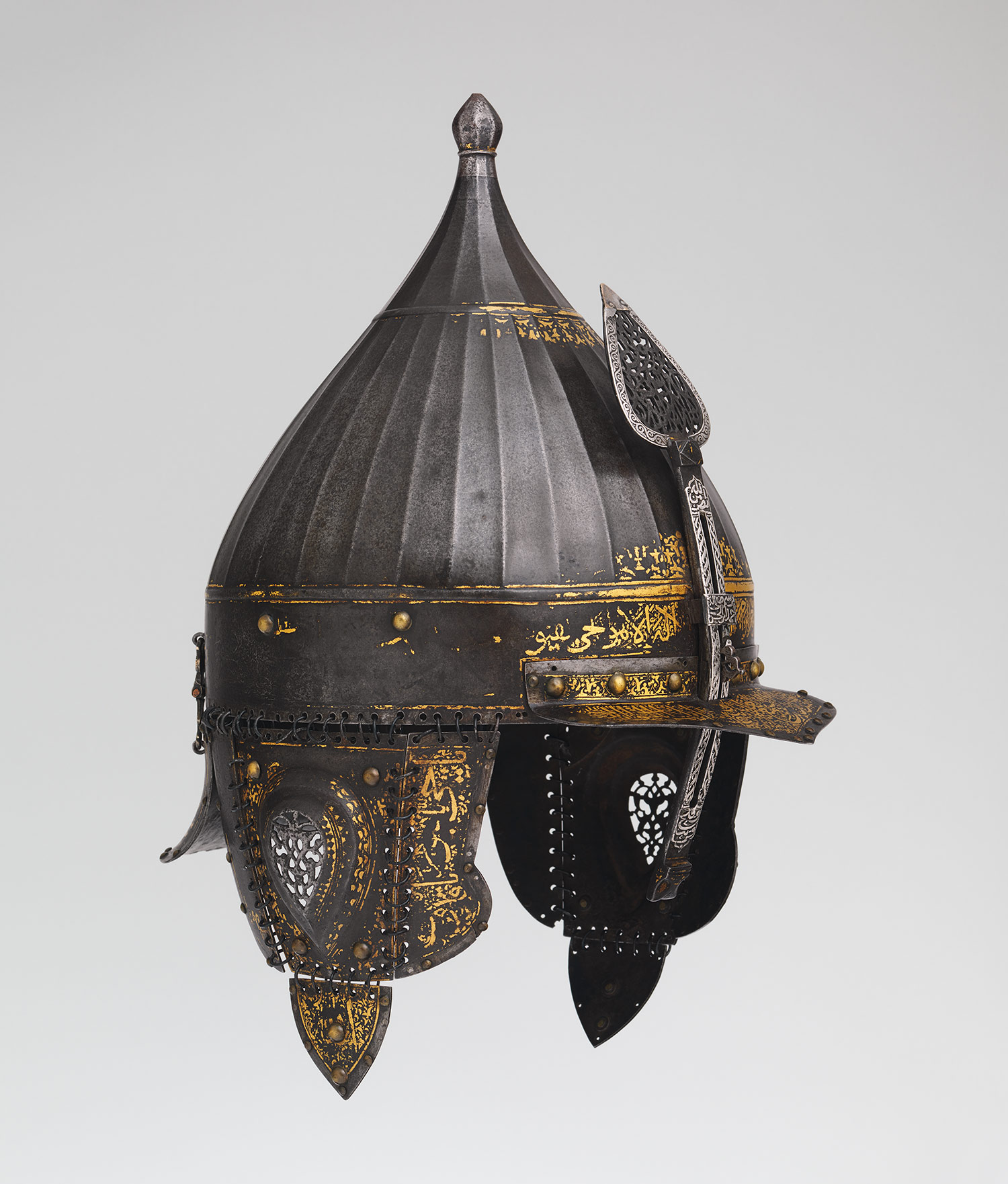The helmets commissioned were likely of the "Ottoman" type: bulbous bowls that rose to a point with a row of holes along the bottom rim used for attaching the accompanying plate or mail neck and cheek guards, occasionally with a long nose guard in the front topped by a decorative piece of metalwork bearing an inscription. These "turban helmets" varied widely in decoration and were produced throughout the region, both in Ottoman and Habsburg lands. A number of the surviving examples bear armorer's marks from Nuremberg. I am currently in the process of collecting references to similar commissions and hope to have a more detailed and comprehensive post on them soon. Until then, I have attached my translation of the document below, along with the original and some examples of similar helmets.
Translation:
"Greetings to you sir, my good neighbor. They gave me the two helmets which you sent me for my money. Thank you for your service my sir. I promise you that if you should ask for anything of this type from me, I will acquire it for you. Do not send me money bravely just to tell me what you want, as I can find the money later with you. I sent you the price of the helmets: 25 gold and new thalers, which should cover the price of the helmets. Send my greetings/thanks to Sir Domokos. The great emperor [sultan] gave Wely Szu Pasha [should be referring to Güzeldzse Rustem Pasha] 52 thousand in cash as a present, and also a beautiful horse with fittings. On top of that he also gave the head janissary of Upper Turkey the appointment of head aga. Please accept the beautiful blue mahraman I have sent you as a wedding present. Please send me a response assuring me that you received all of the money and the mahraman. May God bless you. Written in Buda, on Easter Wednesday 1560.
Murad, Janissary Aga of Buda"
Exterior: "Give this letter to the gracious Dobó István, my sir and good neighbor."
"Köszünethemet mynt yo szomszed vramnak. Meg attak a kett sysakot kiket keg ennekem kẅldött penzemre Köszönöm kegdnek szolgalattyait mynt vrammnak: yghyrem ismeg magamat hog kegmed valamire engemet ker e fele dolognak meg szerzesere meg szerzem kegdnek. Keged ennekem bator penszt ne kẅlgyon czyak hog kẅlgi hyrt mytt kewansz meg szerzem kegdnek a penzt az vtan enis meg talalom kednel. Meg kẅltem az szsakoknak az arrat kegdnek: 25 aranyatt es uj tallert, mely az szsakok arrat szynte meg teszy. Damokos vramnak keged en tölem mongyon köszömtetett. Wely Szẅ passanak az haralmas chyaszar 52 ezer orzporatt adott kesz penzẅl azandekon. Ismeg egy fö loẅat mynden szerewel szamaẅal, Annak felette a felsö török orszagba az fö janczyar aga vtan fö agasagot. Kẅldöttem te nads azandekon egy igen szep kék mahramant kit keged vegyen yo newen tölem. Mynd a penz felöl smynd az mahraman felöl en nekem byzonnyos valaszt tegyen keged ha meg attake veg nem. Isten tarcza meg kg : Költ Budan Hẅswet szerdan anno 1560.
Mẅratt janczar aga
buday"
exterior: "Adassek ez lewel az Nadsagos Dobo Istwannak Lewaba nekem wramnak, es yo szomszedomnak."
Published in: Takáts, Sándor, Ferenc Eckhart, and Gyula Szekfu, eds. 1915. A Budai basák magyar nyelvu levelezése. Budapest: Magyar Tudományos Akadémia, #10.
Archive: Magyar Országos Levéltár - Dobó levéltár, I csomó
 |
| "Ottoman Helmet," 16th century, Metropolitan Museum of Art, 04.3.456a |
 |
| "Ottoman Style Helmet," 16th century, Walters Art Museum, 51.72 |
 |
| "Ottoman Style Helmet," probably Nuremberg, 16th century, Hungarian National Museum, inv. 55.3346 |
